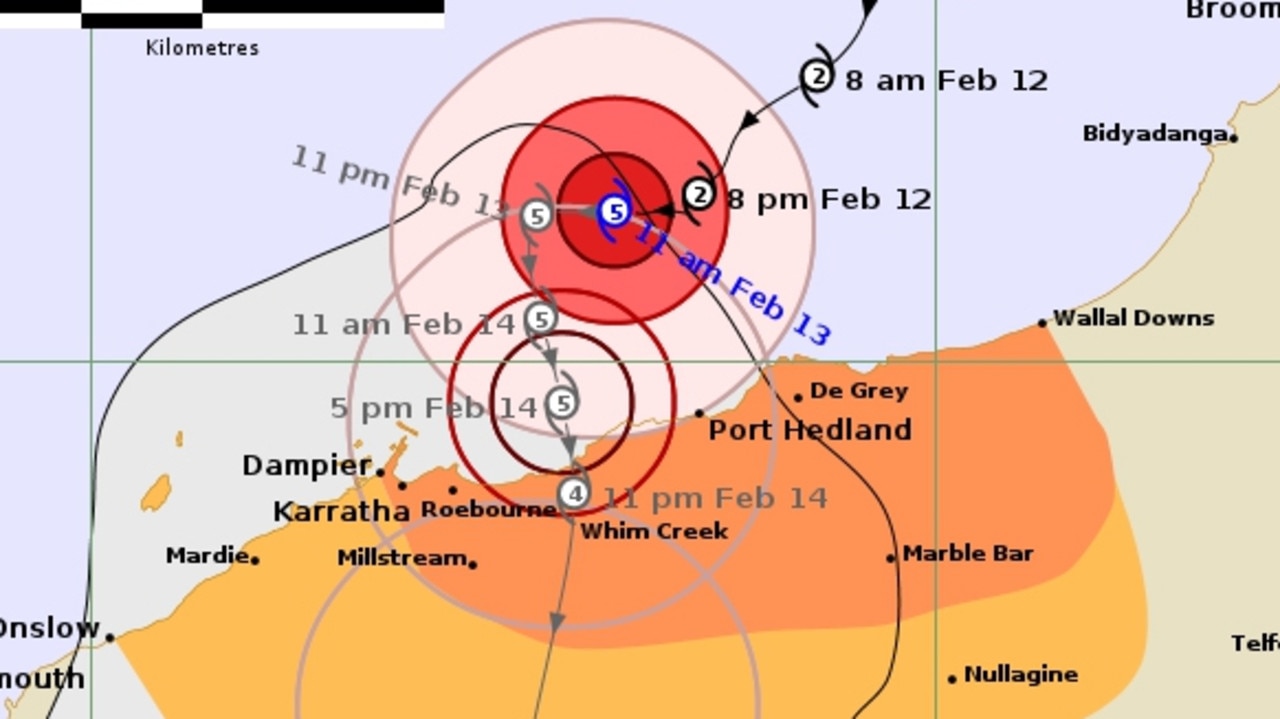AUKUS subs deal to ‘neutral’ impact for four years due to Defence spending cuts
This is how Defence will cover the building of the AUKUS submarines, and where spending cuts will have to be made.

National
Don't miss out on the headlines from National. Followed categories will be added to My News.
Spending cuts within Defence will cover the $9 billion Australia is spending on the first four years of the AUKUS submarine program, with future governments left to grapple with the eye-watering long-term price tag.
Acquiring, building and maintaining a fleet of eight nuclear-powered submarines is expected to cost about 0.15 per cent of Australia’s GDP – or between $268bn and $368bn – over the next three decades.
The federal government’s May budget will include $9bn over the next four years for AUKUS, with figures released on Tuesday showing the cost will be fully offset so the new investment has a “neutral” impact.

About $6bn has been saved from the since-dumped French Attack Class submarines, while a further $3bn will be recovered from the Defence Integrated Investment Program (IPP).
Between now and 2032-22 the AUKUS program will cost $50-$58bn, but the hit to the budget over that decade will be reduced by $24bn that would otherwise have been spent on the French subs.
Of the $9bn allocated over the forward estimates, about $2.5bn will go to the US to boost production of the Virginia Class subs, which Australia will be purchasing at least three of.
Another $500 million will go to the UK to cover its costs.
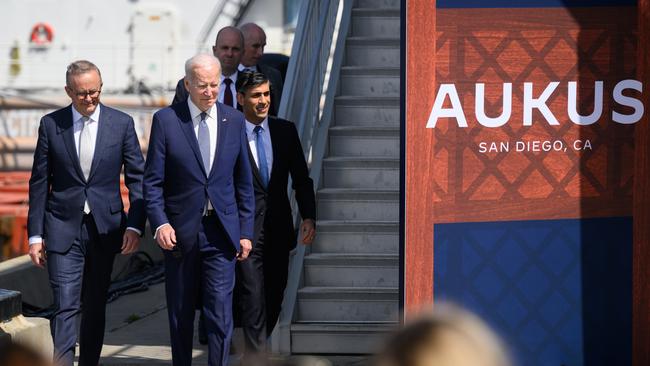
The remaining $6bn will be invested domestically, including $2bn for infrastructure in South Australia and $1bn for Western Australia.
The precise nature of the cuts and re-prioritisation within the IPP to offset this initial spending is not yet known, with Defence Minister Richard Marles confirming the information would be revealed in the budget in May.
In the interim the government will release its Defence Strategic Review, which is expected to include cuts in the short term followed by more spending in the future.
Mr Marles said the “significant” AUKUS price tag was an investment in Australia’s economy and national security.
He said the estimates released by the government were “honest” and “transparent” as they included all aspects of workforce, infrastructure and maintenance as well as the price of the subs.
But Opposition leader Peter Dutton has accused Labor of “cannibalising” the Defence budget rather than finding entirely new funds for AUKUS.
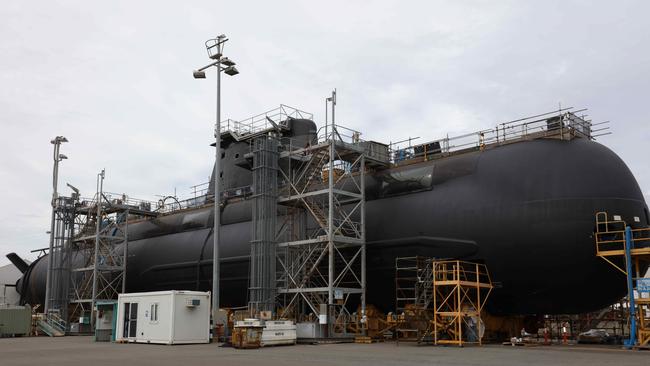
“It’s not a viable option,” he said.
“There’s no magic pudding, there’s no way in which you can sugar-coat it, there is extra money that needs to be spent in Defence.”
But the government has rejected Mr Dutton’s characterisation of the spending cuts, pointing out the upcoming review was specifically designed to ensure Australians were getting value for money in Defence spending.
Over the next 10 years, about $8bn will be spent on upgrades to Western Australia’s Stirling Naval Base, which will be accommodating visiting US and British boats and later Australia’s own submarines.
A new base is expected to be built on the east coast in the coming years, which was previously estimated to cost $10bn.

THOUSANDS OF JOBS TO BE CREATED
Thousands of Australians will be sent to the US and UK to learn every aspect of nuclear-powered submarine construction, maintenance and operation so they can then use their expertise at home.
Australia is expected to build one nuclear-powered submarine every three years from the early 2040s under the AUKUS plan unveiled on Tuesday, giving the nation less than two decades to create an entire workforce up to the task.
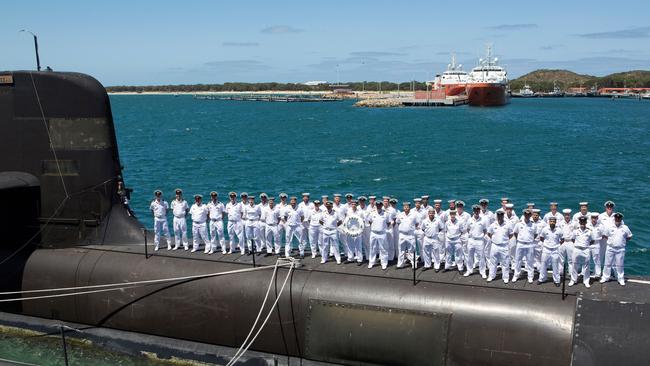
More than 20,000 jobs will be created over the life the project, including 8500 in shipbuilding.
Defence Industry Minister Pat Conroy said Australians would be embedded in the US and UK submarine industrial bases from as early as this year to accelerate their training and development.
“Hundreds, if not thousands of Australian workers will be working in UK and US shipyards, helping them build their submarines and bringing back valuable skills and experience to help with our build,” he said.
Mr Conroy said the government would establish a skills academy in South Australia to deliver training to hundreds of apprentices locally.
“An apprentice who starts on this project today could work their entire career building these submarines for Australia, which is a tremendous opportunity,” he sad.
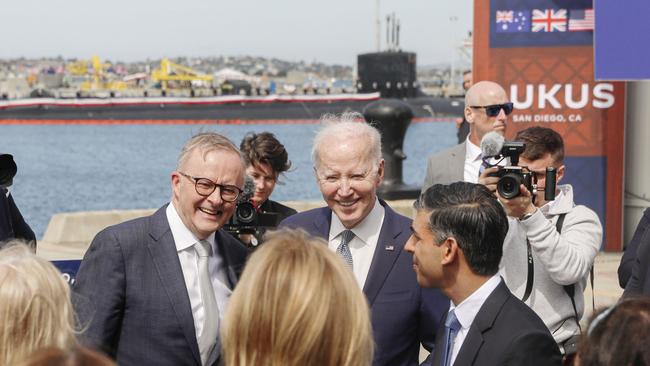
Mr Conroy said upskilling people in “adjacent” industries to work on the submarine projects would also boost the workforce.
“We’ll spend around $30 billion just uplifting the skills and capacity of the Australian industry and workforce,” he said.
It is hoped Australian businesses will also be able to manufacture components for submarine production lines in the US and UK.
“Opportunities identified where we could be competitive include around valves, pumps, batteries and pipe fitting,” Mr Conroy said.

Higher education facilities and the private sector will also play a major role in developing skilled workers in science, engineering, nuclear and other specialist areas.
Universities Australia chief executive Catriona Jackson said AUKUS loomed as one of the “greatest industrial challenges” of Australia’s history.
“We’ve been in close discussion with our government … and AUKUS partner governments at the highest levels, on how universities can boost the flow of highly educated workers needed to boost our capability in the interests of all,” she said.
“One way we can do this is by offering more internships and work-integrated learning opportunities for students studying in areas of defence need, here and abroad.”
SPECIAL VISAS OPTION
Special visas to allow foreign workers to “plug gaps” in the huge local workforce required for the AUKUS submarine program are being scoped by Home Affairs.
While it is hoped the estimated 20,000 person workforce required in future can be found in today’s schools and universities, the department has been asked to look at options for fast-track visas here should numbers fall short.
These would not only be for nuclear-powered submarine expertise from the US and UK but also possibly other allied countries from the Five Eyes alliance, and workers with certain skills including electronic warfare, nuclear technicians and cyber experts.

A potential AUKUS visa would also look to allow the free movement of Australians to the US and UK to work with counterparts there, with any visa granting conditional on security clearances from reciprocal nations.
Foreign workers are not allowed to work on confidential defence contracts for security reasons but, given the size and calibre required to significantly uplift both the industrial and professional base in Australia, a specific visa could be extended to the broader allies including Japan, New Zealand and Canada.
Mr Conroy was cool on the idea as those in schools today could be working on the program their entire working careers but confirmed all options were being considered.
“We are going to be training Australians to do this and we are confident that we are investing now to deliver that,” Mr Conroy said.
“We’ve talked about there might need to be discussions around visa arrangements to facilitate workers from Australia working on US and UK submarines and vice versa but … it’s about having a sovereign Australian workforce. We will look at visa arrangements if we need to around facilitating work experience and plugging gaps but we will be training Australians to do this job.”
In a submission to the Defence Strategic Review (DSR) blueprint report on the nation’s future security needs due to be released next month, peak body Universities Australia called for “defence internships” for AUKUS, Five Eyes and Quad pact allies.
The group, representing 39 member universities, said that opening the Australian-only internships to students from “allied” nations would expand the number of potential applicants each year by more than 100,000, including from India and Japan.
“While there are valid national security considerations to be considered, the current policy settings restrict access to a wide cross-section of the Australian university cohort and limit Defence’s ability to recruit internationally, despite the rigorous existing vetting and risk mitigation procedures in place,” its submission to the review stated.
More Coverage
Originally published as AUKUS subs deal to ‘neutral’ impact for four years due to Defence spending cuts




